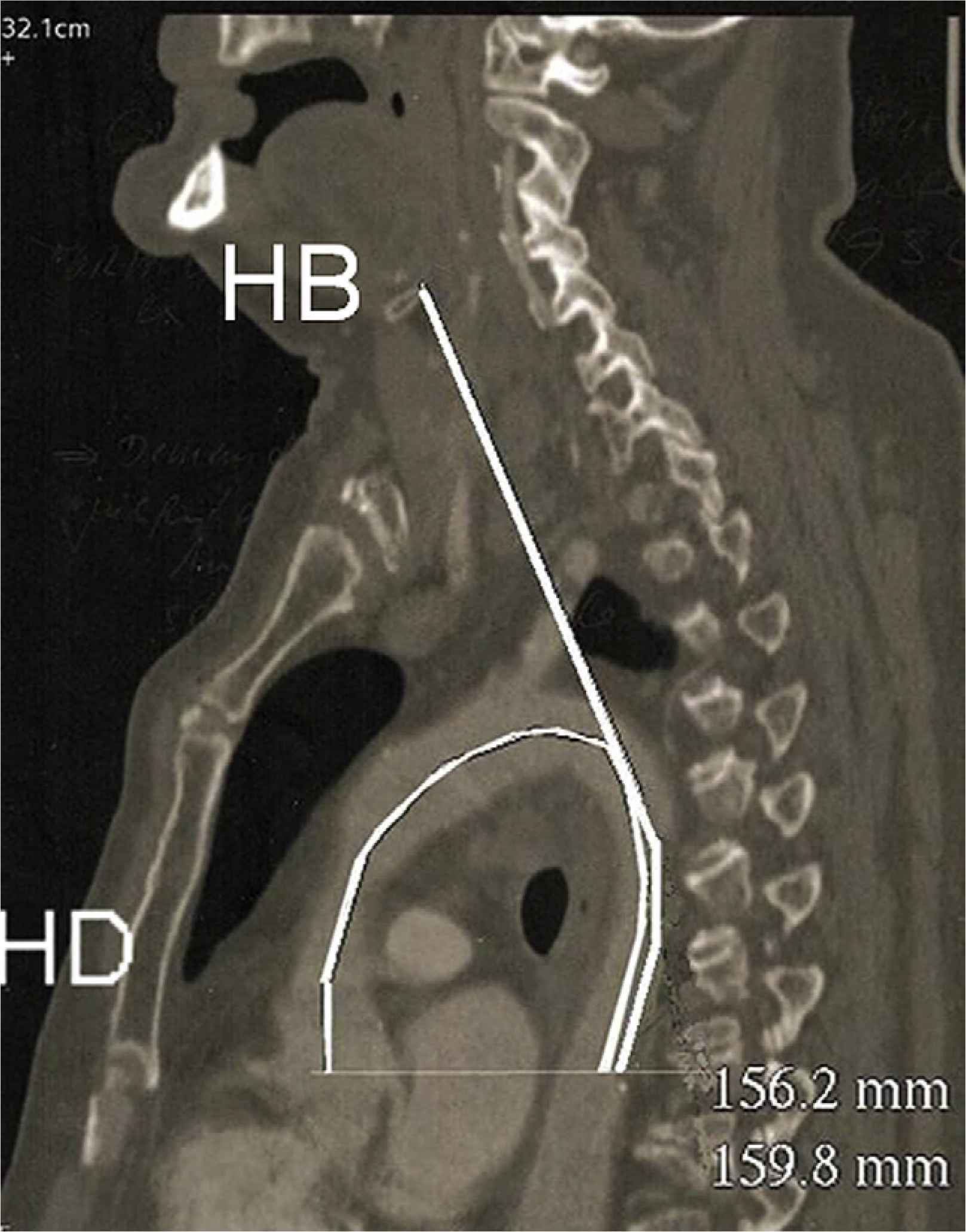P10.05 DOES THE AORTIC VALVES CORRESPOND TO A STABLE ANATOMICAL LANDMARK?
- DOI
- 10.1016/j.artres.2011.10.149How to use a DOI?
- Open Access
- This is an open access article distributed under the CC BY-NC license.
Purpose: In order to determine if the height of a subject could be a reliable surrogate variable to determine the pulse wave travelling distance within the aorta, we investigated the anatomical distance between the aortic valve nidus and the hyoid bone.
Methods: Using 28 patient’s chest CT-scans. From MPR reconstructed oblique plans we measured 1) the length of the aortic arch from the aortic valve (AV) to the intercept of an horizontal line passing through the aortic valves and crossing the descending aorta at mark HD (see figure), and 2) the distance between the HD mark to the Hyoid Bone (HB).

Results: There was a correlation between the AV-HD distance and the HD-HB distance (non parametric r = 0.66, p <0.0001) and the AV-HD distance were positively correlated to the height of the subjects (r = 0.60, p < 0.002).
Conclusions: 1- The AV-HD distance projects to a constant anatomical landmark (i.e. the hyoid bone) 2- The size of this arterial segment is significantly correlated to the height of the subjects. These preliminary results could be useful for a more accurate determination of the pulse wave velocity.
Cite this article
TY - JOUR AU - M. Hallab AU - A. Dahou AU - P. Chevalet PY - 2011 DA - 2011/11/29 TI - P10.05 DOES THE AORTIC VALVES CORRESPOND TO A STABLE ANATOMICAL LANDMARK? JO - Artery Research SP - 189 EP - 190 VL - 5 IS - 4 SN - 1876-4401 UR - https://doi.org/10.1016/j.artres.2011.10.149 DO - 10.1016/j.artres.2011.10.149 ID - Hallab2011 ER -
